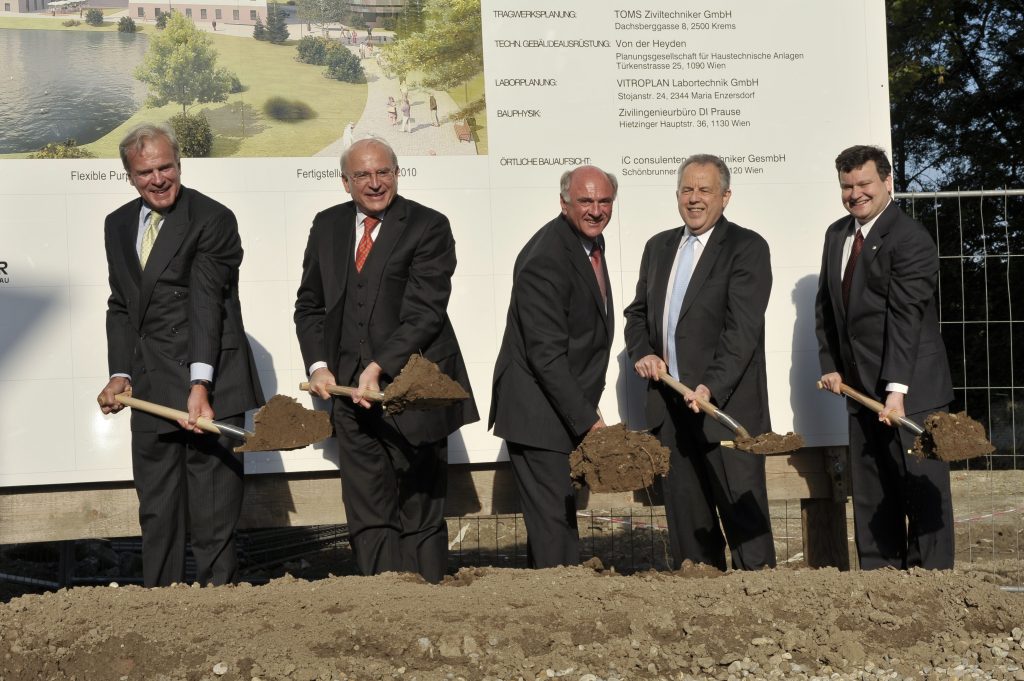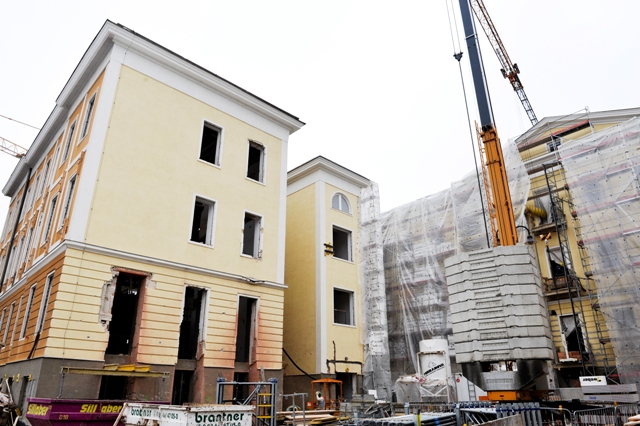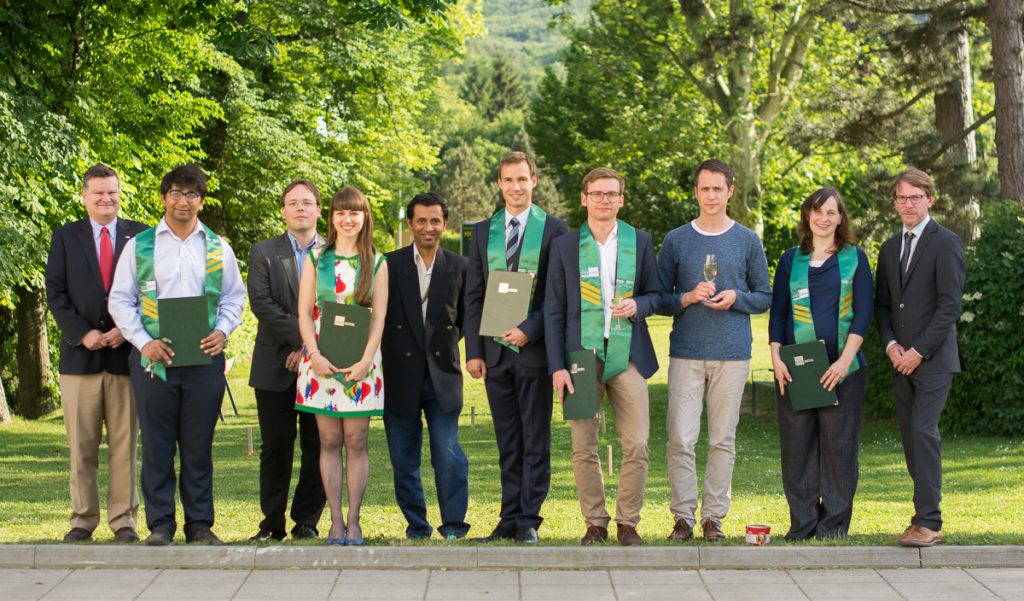From a bold idea to a thriving research institute
When Anton Zeilinger suggested establishing an outstanding institute for basic research in Austria at the 2002 Alpbach Technology Forum, it was a bold idea―an idea that led to what is today Institute of Science and Technology Austria, a highly successful research institute that Nature Index ranks among the top ten in its 30 under 30 ranking.
From Anton Zeilinger’s bold idea it was a long hard road before the first professors were able to move into their offices on campus. For the idea to become a reality, a legal foundation had to be outlined. After the Federal Law on the Establishment of the Institute of Science and Technology Austria (IST Austria) was passed in 2006, Haim Harari, physicist and former president of the Weizmann Institute of Science, Olaf Kübler, physicist and former president of the ETH Zurich, and Hubert Markl, biologist and former president of the Max Planck Society, were asked to outline their ideas for a basic research institute. This international committee published their report in June 2006, thus providing a blueprint of what was to become IST Austria.
Until the first president was appointed, all executive tasks of IST Austria were in the hands of the Executive Committee of the Board of Trustees, chaired by Haim Harari. In particular, until August 2009, Harari led campus development, faculty hiring, and established all necessary organizational structure. The first employee, Gerald Murauer, was hired at the beginning of 2007, as an interim manager, and was later appointed by the first president as Managing Director. The staff grew gradually and reached half a dozen by fall 2007.
In early 2008, the search for a suitable candidate for the open position of president of IST Austria was started. The Executive Committee of the Board of Trustees served as a search committee during the process. Out of several dozen candidates, the Board of Trustees elected Thomas Henzinger at the end of 2008. He participated in all major decisions, in particular, in the recruitment of new professors, throughout 2009 and started his full-time employment at the Institute in September 2009.




In June 2009, IST Austria was officially inaugurated and the first research groups moved onto campus. For 120 years, there had been a mental health clinic on this site but during the Nazi era from 1938 to 1945 thousands of mentally ill patients were killed or deported. A memorial on campus commemorates these crimes.
When IST Austria started in 2009 the campus looked very different than it does today. It consisted merely of the Central Building with the Raiffeisen Lecture Hall and the voestalpine Building. The first laboratory building, the Bertalanffy Foundation Building, was opened for experimental research groups in October 2010, Lab Building East in November 2012, and Lab and Office Building West in December 2015.
Since its opening, the campus has continued to expand. Apartment buildings (opened 2012 and 2017) offer employees housing on campus. In 2015 the new cafeteria building was opened as the number of employees had outgrown the small restaurant which used to be in the Central Building. In 2018 the Administration Building was opened to the growing administration unit. 2018 also saw the groundbreaking for what is to become Lab Building 5. A visitor center and Lab Building 6 are planned over the next few years.
The growth of campus infrastructure reflects the increase in scientists and staff, and the excellent research done at IST Austria. In 2009 the first professors to join IST Austria were biologist Nick Barton and mathematician Herbert Edelsbrunner. The first call for PhD students was in 2010, and IST Austria celebrated its first graduates in 2015.

In 2014, five years after the opening of the campus, IST Austria had grown to 400 employees and the first patent derived from IST Austria research was filed. From the beginning, the scientific service units were an integral part of IST Austria’s history providing research support and service to all scientists. Starting with bioimaging and the machine shop in 2010, the Electron Microscopy Facility was added in 2013, the Nanofabrication Facility with a clean room in 2016, and Cryo-EM started operating in 2019.
2019 marked the 10-year anniversary of curiosity-driven research at IST Austria. At this tie, 53 research groups explored the frontiers of their fields in mathematics, computer science, physics, chemistry, biology, and neuroscience. For IST Austria’s success, it is essential that the traditional borders between fields are crossed, so collaboration between research groups is strongly encouraged.
From 2009 to 2020, the institute reached 60 research groups with almost 50% working in the life sciences, including neuroscience; the other half distributed among physics, computer science, and mathematics, as well as a small group of chemists. In 2021, the institute reached 67 research groups in the three Areas Life Sciences, Information and System Sciences, and Mathematical and Physical Sciences.
Twelve years into the institute’s history, it has become time to modernize its logo and allow a second abbreviation of its name. Therefore, the Institute of Science and Technology Austria decided in 2022 to call itself ISTA.
With the new logo, the institute presents a modern, fresh, less formal look that still maintains the institute’s serious image. The play with the different shades of green reflects the diversity that ISTA offers, while the blocks themselves allow many different interpretations. From books as the origin of knowledge, to bar graphs indicating dynamic change, to growing buildings on campus, to dominoes as impulses triggering thought processes, to an idea that is in the process of taking off – there are no limits to the free interpretation of the logo.

As a relatively young institution, ISTA had the opportunity to create its own insignia that symbolizes its values, its research, and its people. A team of ISTA employees and renowned Austrian designer and artist Andreas Palfinger designed and built a presidential chain as well as a set of stoles to be worn by the Institute’s president at ceremonial events.
The chain’s centerpiece combines organic and technology-inspired elements to represent the multidisciplinary culture at ISTA and the many scales of nature its researchers investigate. At its center, the Institute’s founding principles are written in golden micrometer-scale letters on a silicon disk.
Each chain link symbolizes one of the Institute’s presidents, with their name and term duration written on the link on a microscopic scale. The links’ designs also represent the respective president’s field of research. This way, the chain becomes an evolving artifact, with a new chain link for each new president. Read more about the insignia and their creation here.
Looking into the future: by 2026 the number of employees will exceed 1000, and include about 90 research groups.
More information:


